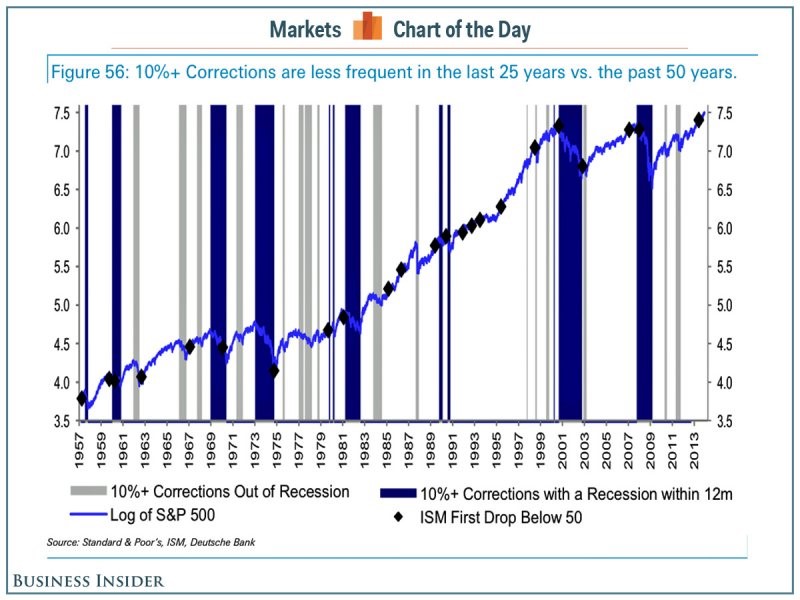A correction, like the one some benchmark indices have entered or are approaching, is a normal, if painful, part of stock market cycles.
Corrections, often defined as drops of 10 percent or more from a trading peak, typically follow a two- or three-year bull market. The current bull market has been on an easy ride for 5 ½ years and some believe it is well overdue for a correction.
Related: Stock Selloff Could Get Better Before It Gets Worse
Corrections can be healthy for markets, say experienced investors. Barring a worldwide disaster – Earth Hit by Gigantic Asteroid, for instance – the correction is like a house cleaning that is short lived, allows markets to consolidate, and paves the way for new highs.
Still, many investors were hoping for a strong finish to the calendar year despite the confluence of negative headwinds, which include a possible recession in Europe, the war against ISIS, and even headlines about Ebola in the U.S.
Plus, it’s October – a month that often takes a chunk out of your portfolio. As of Thursday morning, the DJIA hasn’t hit a 10 percent correction – it’s down 7 ½ percent. The NASDAQ, however, where most tech stocks are traded, did dip 10 percent below its recent high.

Corrections often last about two months, ending when stock or bond prices bottom out and investors start buying again. Since World War II, declines of 5 percent to 10 percent in the S&P 500 have taken a median of 28 days to unfold and 39 days to recover, according to S&P Capital IQ.
Related: Fear Goes Viral on Wall Street
“A correction is shorter in length and generally less damaging to investors than a bear market,” as CNBC put it. “A bear market happens when equity prices keep falling and investors keep selling into a downturn of 20 percent or more for the overall market.”
The ripple effects once in bear market territory could be far more dramatic.
Bear markets, or the recessions they sometimes foretell, can spur big companies to begin layoffs, and the dominos to fall - lower consumer spending, lower housing starts and home purchases, higher government outlays, and further economic deterioration.
The biggest threat to your portfolio during a correction? Your emotions. The market goes up and down – and over time it has gone up. If you’re comfortable your asset allocation is correct, then you’re in a good position to ride through the anxiety that goes hand-in-hand with a correction.
Top Reads from The Fiscal Times:
- Baby Boomers Not Set for Rising Health Costs
- No, Budget Cuts Didn’t Prevent An Ebola Vaccine
- Will Zuckerberg’s $25M Ebola Donation Spur More?




